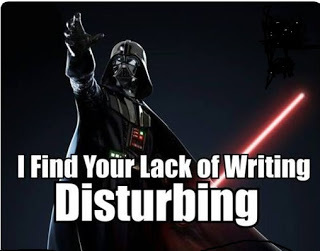Conflicting Conflicts
 Last time I told you that giving your people more than one conflict helps the reader care about them. Usually one is more personal than the other, although they can be related.
Last time I told you that giving your people more than one conflict helps the reader care about them. Usually one is more personal than the other, although they can be related. In my plot class I talk about the secondary plot. In that context, let’s consider the movie Die Hard. The big, obvious conflict is between a cop – McLane - who wants to save a group of hostages, and a terrorist whose true objective we don’t get to know until almost the end of the film. But note that McLane is also wrestling with a more personal conflict with his wife and we are not allowed to lose sight of that conflict throughout the film. It’s easier for us to relate to that more personal objective. That helps us relate to the character. Just like in Rocky (the example I used in a previous blog) I have never wanted to get punched by a heavyweight champ but HAVE wanted a woman to love and respect me, so that goal helps me relate to the character.
Your protagonist, and maybe your antagonist too, should also have internal conflicts. It might be okay for your villain to be willing to do whatever it takes to take over the world, get the girl or win the race, but your protagonist should have to consider his response to each challenge on a moral basis. Sure he can save the hostage by shooting the bad guy in the head, sure he can find the killer by lying to everyone about what he already knows, of course he can get the girl by flattening the other fellow’s tire… but SHOULD he? Yes, many people like a totally confident protagonist, and your story might work fine without internal conflict… but it will be better with it.
Remember, conflict is about character. In a good novel, or movie for that matter, the protagonist will grow and change during the story. It is the conflict that makes that change. Overcoming each challenge forces our protagonist to show the strength, or determination, or quick wits we want to see in a heroes, and the challenge the conflicts present force him to change.
And since conflict makes a story, so you need more than just conflict between the primary protagonist and antagonist. There should be some sort of conflict in every scene. What if everyone in the scene agrees on what they want to do? Then they can still disagree on how to do it, or when.
Published on August 20, 2016 06:58
No comments have been added yet.



